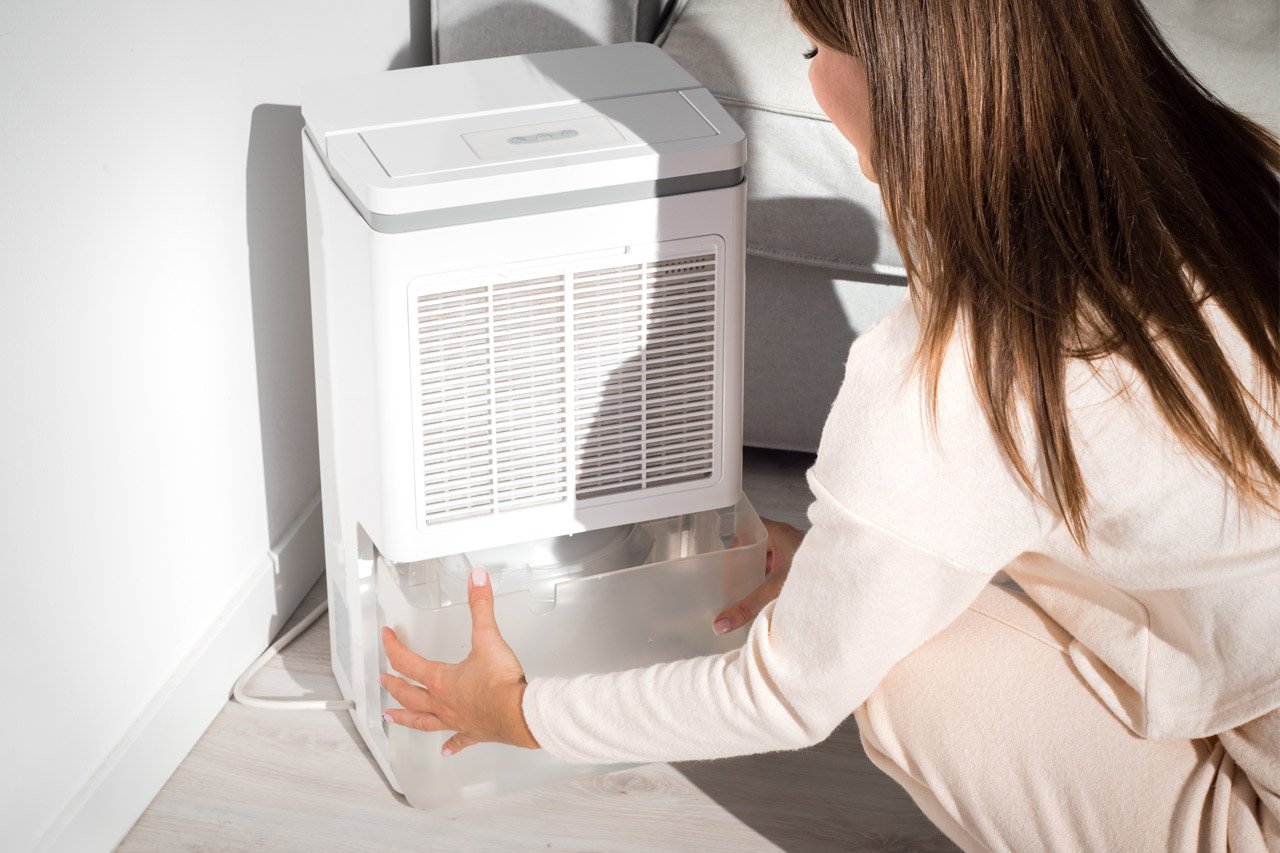Choosing a moisture absorber for the bathroom
February 2023

What causes moisture in the bathroom?
Humidity is not a bad thing per se, as dry air irritates the airway and prevents healthy sleep, for example, in winter when radiators are on. The humidity level in the bathroom is higher than in other rooms, which is self-explanatory, and as long as it falls within the aforementioned limit, there is no need to worry. However, sometimes it exceeds it significantly, and that’s when we need to do something about it. One of the main causes of high humidity level in the bathroom is malfunctioning ventilation. If it doesn’t drain excess water efficiently, mold can appear. What also favors higher humidity is splashed water that’s left around the sink or shower, which penetrates the walls, floor and grout.
Sometimes bad habits cause excess moisture, for example, drying towels and laundry, especially with the door and window closed (if there is one in the bathroom). In such conditions, air circulation is severely disturbed. An indirect cause of moisture problems is temperature. Not without reason it’s recommended to keep the temperature in the bathroom a few degrees higher than in other rooms. On one hand, it increases our comfort when bathing, and on the other hand, with higher temperature it’s easier to dry the room.
How to get rid of moisture in the bathroom?
Now that we know what contributes to high humidity levels in the bathroom, it’s best to take preventive measures. First of all, good air circulation is important. The door should have holes or be undercut. If there’s a window in the bathroom, it’s recommended to open it after every bath. We also need to check the efficiency of ventilation and sanitation facilities systematically. It’s also worth double-checking if the bathroom furniture is well protected against moisture. Water vapor accumulates on the furniture and if it’s poorly finished or has cracks, water will penetrate its structure. Splashed water should always be wiped up and removed from the shower unit after bathing. We should also make sure there’s a right temperature in the bathroom, and obviously, find space for our moisture absorber. It can be a battery-powered absorber, one that is handmade or any other. What kind of bathroom absorber will work best?
What moisture absorber should we choose?
Whether we should get a small, large, chemical or electric moisture absorber largely depends on what level of humidity is involved. When the bathroom humidity is at the optimum level, and we wish our absorber to be a preventive measure, smaller models, granules, tablets or absorbers made by household members will do the job. However, they are not enough when circulation is disturbed and there is too much moisture. In this case, it’s better to focus on larger and more advanced devices.
Types of moisture absorbers
Getting a moisture absorber for our home is undoubtedly a good idea. When going to the store, it’s easy to notice that there are different types to choose from. What kind of moisture absorber is worth choosing when we wish to place it in the bathroom?
- Moisture-absorbing tablets. The first type you may encounter is a container with desiccant refill tablets. In this case, calcium chloride and sodium chloride are those usually responsible for moisture absorption. With use, the volume of the tablets gets smaller and smaller until they are used up completely. Usually, such a bathroom moisture absorber is enough for 3 months, but if the humidity level is very high, it won’t last as long. In extreme cases it might only last 2 weeks. Thus, it’s a good solution if the humidity level is at an average level, but if there’s lots of water to absorb, it’s not necessarily an economical choice. It might be better to think about other options then.
- Granules in sachets. These sachets are made of moisture-permeable nonwoven fabric and are filled with an absorbent - most often silica gel of hygroscopic properties. Such a bathroom moisture absorber can be placed anywhere, and to achieve a better result, we can use several of them. As in the previous case, with high humidity, it uses up quite quickly, so it’s preferred for less humid rooms.
- Bathroom electric moisture absorber. This is the best option if we have a big issue with moisture. It’s equipped with a control panel that allows us to adjust the mode of operation to the conditions in the room. In more advanced models, we can choose between daytime and evening modes. Water accumulates in a small container, which must be systematically emptied.
- Homemade bathroom absorber. If someone wants to hold off on buying one, wants to save some money or is interested in DIY, then they can make a simple moisture absorber themselves. Moisture is well absorbed by black tea, baking soda and silica gel. These are commonly available products which can be poured into a moisture-permeable fabric pouch and then placed in the bathroom. To give it some fragrance, add in dry flowers, ground coffee or orange slices.
- Bathroom dehumidifier. This device is more advanced than a moisture absorber. It’s much more efficient and will work well in a very humid interior. Bathroom dehumidifiers need to be connected to a power source and are more expensive than moisture absorbers.
Where to put the moisture absorber?
When thinking where to place the moisture absorber, we shouldn’t forget about its purpose. Therefore, it should be put near the place that is affected by moisture. It can be placed by the sink or the shower unit, as this is where the water condenses the fastest. With an absorber, we can get rid of excess moisture at the source. When it comes to small chemical absorbers, such as those with granules and tablets, we can place several of them in the bathroom. A window sill is also a good spot. Then the absorber will also absorb moisture from rainfall.